South Korea
Welcome to South Korea
South Korea is a captivating country where ancient traditions blend seamlessly with cutting-edge modernity.
Nestled on the southern half of the Korean Peninsula in East Asia, it is a land of vibrant cities, serene countryside, rich cultural heritage, and innovative technology. From the bustling streets of Seoul to tranquil tea plantations and stunning coastal cities like Busan, South Korea offers a diverse array of experiences for every traveler.
1.
A Culinary and Cultural Powerhouse
South Korea’s food scene is flourishing, with traditional Korean cuisine gaining global recognition and innovation pushing it further. In 2025, the country continues to shine as a global culinary destination, with numerous Michelin-starred restaurants in Seoul and Busan, including Mingles, which recently earned its third Michelin star. The deep-rooted fermentation culture, recognized by UNESCO, enriches the flavors and traditions you can experience firsthand. Beyond food, South Korea’s cultural tapestry—from historic palaces to modern art and K-pop—offers an unforgettable journey into a unique heritage that is both ancient and contemporary.
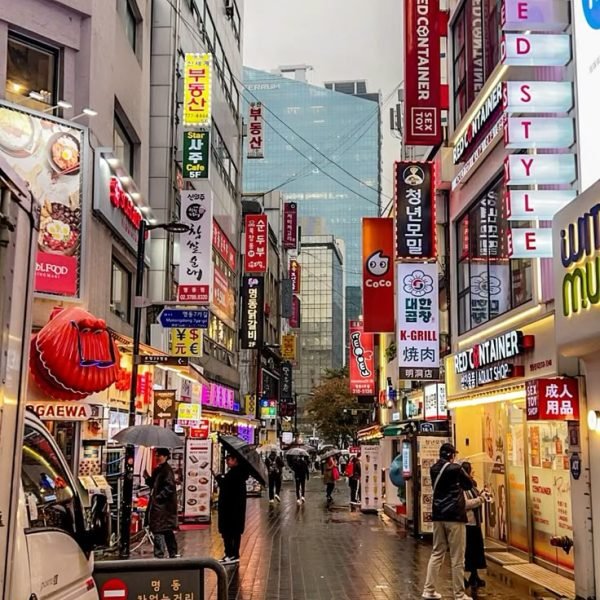
2.
Dynamic and Diverse Destinations
Whether you want to explore Seoul’s futuristic urban landscape and historic sites like Gyeongbokgung Palace, stroll through traditional hanok villages, or relax on the beaches of Busan, South Korea has it all. The country is compact yet varied, making it easy to combine city life, nature, and cultural immersion in one trip. New developments like the hyperloop train promise faster travel between major cities, enhancing your ability to explore more in less time.
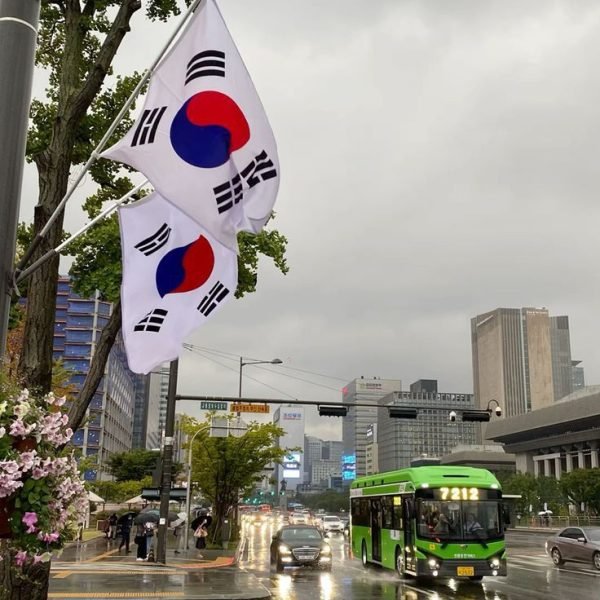
Planning Your Trip
Visa Information
Most travelers will need to check visa requirements based on their nationality. South Korea offers various visa exemptions and e-visa options for short stays, especially for tourism. It is advisable to consult the latest government sources or your local embassy for up-to-date information before planning your trip.
Best Time to Visit
The ideal times to visit South Korea are spring (late March to May) and autumn (late September to November). Spring is famous for cherry blossoms, while autumn offers spectacular fall foliage. These seasons provide comfortable weather and beautiful natural scenery, though they are also the busiest tourist periods, so booking accommodations and flights early is recommended. Summer can be hot and humid, and winter is cold but perfect for winter sports enthusiasts.
Getting To and Around
Getting to South Korea
Incheon International Airport near Seoul is the main gateway for international travelers. It is well connected globally and offers efficient transport options into the city and beyond. From Incheon, you can take trains, buses, or taxis to your destination. The country’s transport infrastructure is modern and extensive.
Getting Around South Korea
South Korea boasts an excellent public transportation system. High-speed trains (KTX) connect major cities quickly, while subways and buses cover urban areas comprehensively. However, note that Google Maps does not work reliably in South Korea; instead, apps like Naver Map and KakaoMap are essential for navigation. The Korea Smart Tourism Card, an NFC-enabled pass, simplifies travel by combining transport, attraction tickets, and payments, offering discounts and convenience for tourists.

Accommodation
South Korea caters to every type of traveler, whether you seek luxury, mid-range comfort, budget-friendly stays, or unique local experiences. The accommodation scene is diverse and well-developed, especially in major cities like Seoul, Busan, and Jeju Island.
Accommodation Options
Luxury Hotels and Resorts
For travelers looking for top-tier comfort and amenities, South Korea boasts numerous luxury hotels and resorts. In Seoul, high-end hotels like Maison Glad Jeju and Signiel Busan offer spacious, modern rooms with excellent facilities, including wellness centers, fine dining, and stunning city or ocean views. Coastal resorts such as Ananti at Busan Cove provide a serene seaside ambiance with indoor and outdoor hot spring pools, exquisite cafes, and friendly service, perfect for relaxation after a day of sightseeing.
Mid-Range and Boutique Hotels
Mid-range hotels are plentiful and often located in convenient areas close to public transportation and shopping districts. Hotels like GLAD Hotel Yeouido in Seoul combine modern amenities with easy access to subway lines and local markets. Boutique hotels in neighborhoods such as Hongdae and Insadong offer a more intimate atmosphere with stylish décor and proximity to cultural attractions, art galleries, and nightlife.
Budget-Friendly Options and Hostels
For budget travelers, South Korea offers a variety of affordable accommodations, including guesthouses, hostels, and goshiwons (small, economical rooms popular among students and solo travelers). Hostels like Hostel Haru and Coco Stay Jongno Hyehwa Station in Seoul provide clean, safe, and social environments, often with communal kitchens and free breakfast. These are ideal for backpackers or those wanting to meet fellow travelers.
Family-Friendly and Long-Term Stays
Families will find comfortable, well-equipped hotels such as Hotel ParkHabio, praised for its friendly staff and convenient location near attractions. For longer stays or study-related visits, serviced apartments and university-arranged short leases offer home-like environments with kitchen facilities and laundry services.
Where to Stay by Neighborhood
- Seoul: Popular districts include Myeongdong for shopping, Hongdae for nightlife and arts, and Insadong for traditional culture.
- Busan: Haeundae Beach area is favored for its vibrant beach scene and ocean views.
- Jeju Island: Resorts and guesthouses near natural attractions provide tranquil stays.
No matter your preference or budget, South Korea’s accommodation options are well-equipped to provide comfort, convenience, and a taste of local hospitality.
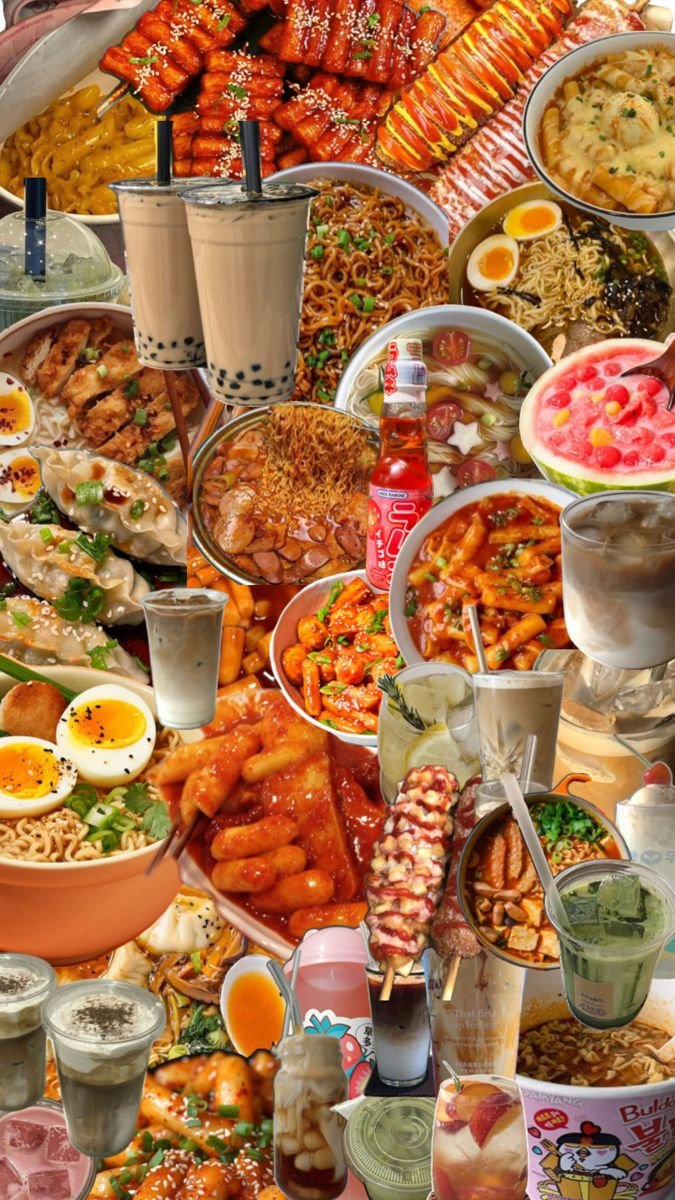
Food and Drink
South Korean cuisine is one of the country’s biggest draws, offering a rich tapestry of flavors, textures, and culinary traditions. The food scene ranges from street food stalls to Michelin-starred restaurants, making it accessible and exciting for all travelers.
Traditional Korean Cuisine
At the heart of South Korean food is a balance of bold, spicy, and fermented flavors. Staples include kimchi (fermented vegetables), bibimbap (mixed rice with vegetables and meat), bulgogi (marinated grilled beef), and various stews like doenjang-jjigae (soybean paste stew). Meals are often accompanied by an array of banchan—small side dishes that complement the main course.
Street Food and Markets
Exploring street food markets is a must. Places like Gwangjang Market in Seoul offer delicacies such as tteokbokki (spicy rice cakes), hotteok (sweet pancakes), and odeng (fish cakes). These vibrant markets are perfect for tasting authentic flavors on the go and immersing yourself in local food culture.
Modern and Fusion Cuisine
South Korea’s culinary scene is dynamic, with chefs blending traditional ingredients with international techniques. Cities like Seoul and Busan feature numerous trendy cafes and restaurants serving innovative dishes alongside classic fare. The country’s fermentation culture, recognized by UNESCO, inspires creative uses of kimchi and other fermented products in modern recipes.
Beverages
Traditional drinks include soju, a clear distilled spirit that pairs well with Korean BBQ, and makgeolli, a milky rice wine with a slightly sweet and tangy flavor. For non-alcoholic options, barley tea and sikhye (sweet rice drink) are popular. South Korea also boasts a thriving café culture, with specialty coffee shops and tea houses offering unique blends and relaxing atmospheres.
Dining Etiquette and Tips
- Sharing food is common, so dishes are often served family-style.
- Use chopsticks and spoons appropriately; avoid sticking chopsticks upright in rice, as it resembles a ritual for the deceased.
- Many restaurants have English menus, but learning a few Korean phrases can enhance your experience.
- Don’t miss trying Korean BBQ, where you grill your own meat at the table, often accompanied by fresh lettuce wraps and dipping sauces.
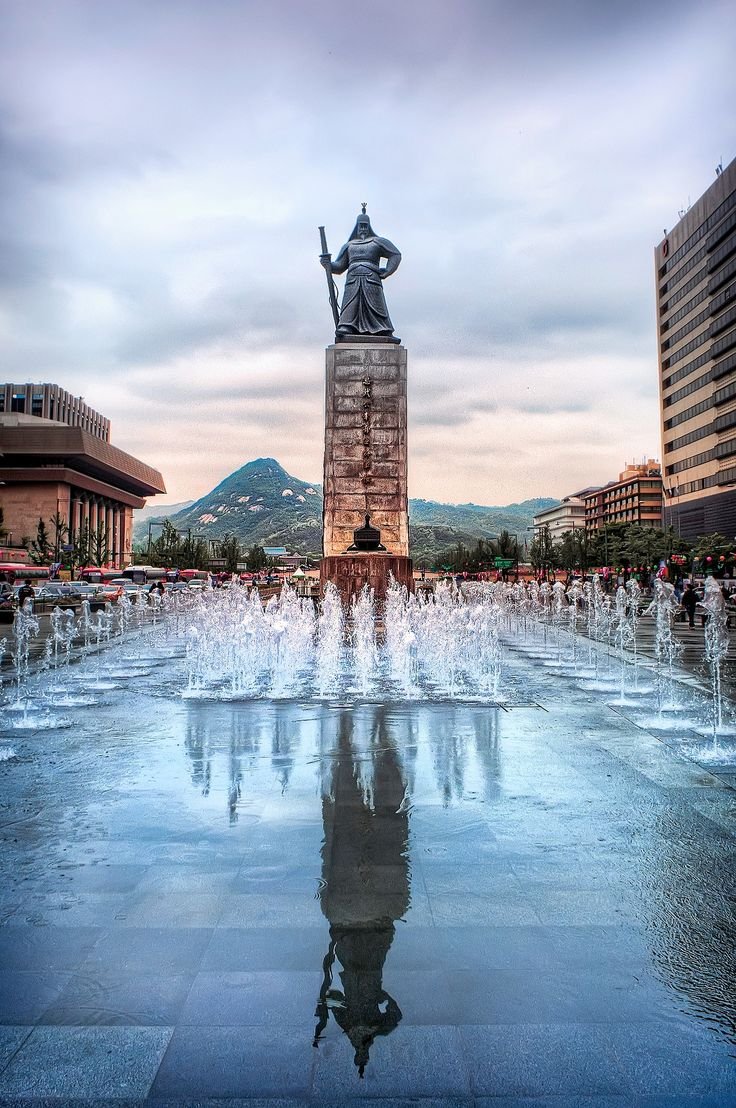
Must-See Attractions
Gyeongbokgung Palace (Seoul)
One of South Korea’s most iconic landmarks, Gyeongbokgung Palace stands as a majestic symbol of the Joseon Dynasty’s royal heritage. Built in the late 14th century, this grand palace complex features beautifully restored halls, tranquil gardens, and the National Palace Museum and National Folk Museum within its grounds. Visitors can witness the colorful and ceremonial changing of the royal guard, a spectacle that vividly brings history to life. The palace’s architecture and surrounding scenery offer a serene escape in the heart of Seoul, making it a must-visit for history enthusiasts and culture seekers alike.
N Seoul Tower (Seoul)
Perched atop Namsan Mountain, N Seoul Tower offers panoramic views of the sprawling metropolis below. Whether you choose to hike up the mountain or take the scenic cable car, the journey is part of the experience. The tower’s observation decks provide breathtaking vistas, especially at sunset or after dark when Seoul’s city lights sparkle. The tower also features interactive exhibits, cafes, and romantic “love locks” where couples leave mementos of their visit. It’s a perfect spot for photographers, families, and couples looking for a memorable viewpoint.
Jeju Island
Known as South Korea’s natural paradise, Jeju Island captivates visitors with its volcanic landscapes, lush forests, and pristine beaches. The island’s crown jewel is Hallasan, a dormant volcano and the highest peak in South Korea, offering spectacular hiking trails for all skill levels. Jeju’s waterfalls, including Jeongbang and Cheonjiyeon Falls, provide picturesque spots for relaxation and photography. The Seongsan Ilchulbong Peak, a UNESCO World Heritage site, is famous for its stunning sunrise views. Jeju’s unique culture, seafood cuisine, and outdoor activities make it a beloved destination for nature lovers and adventurers.
Bukchon Hanok Village (Seoul)
Nestled between Gyeongbokgung and Changdeokgung Palaces, Bukchon Hanok Village preserves hundreds of traditional Korean houses known as hanoks. Walking through its narrow alleys is like stepping back in time, surrounded by wooden architecture with elegant tiled roofs. Many hanoks have been converted into cultural centers, guesthouses, tea houses, and craft shops, allowing visitors to experience Korean traditions firsthand. This village offers a peaceful contrast to Seoul’s urban bustle and is ideal for those interested in history, architecture, and local culture.
Changdeokgung Palace and Secret Garden (Seoul)
Another UNESCO World Heritage site, Changdeokgung Palace is renowned for its harmonious integration with nature. The palace’s Secret Garden, or Huwon, is a tranquil oasis with lotus ponds, stone pavilions, and beautifully landscaped paths. Guided tours reveal the garden’s historical significance and the palace’s role in Korean royal life. The architecture and serene environment make it a favorite among visitors seeking both cultural insight and natural beauty.
Everland Theme Park
For families and thrill-seekers, Everland is South Korea’s largest and most popular theme park. Located just outside Seoul, it offers a wide range of attractions including roller coasters, a zoo, a water park, and seasonal festivals. The park’s diverse entertainment options cater to all ages, making it a fun day out for groups and families. Seasonal parades and live shows add to the vibrant atmosphere.
Insadong Cultural Street (Seoul)
Insadong is a lively neighborhood known for its traditional arts and crafts, antique shops, and tea houses. It’s the perfect place to shop for souvenirs like handmade pottery, calligraphy brushes, and hanbok (traditional clothing). Street performances and galleries enrich the cultural vibe, while local eateries serve authentic Korean snacks and meals. This area offers a deep dive into Korea’s artistic heritage in a bustling urban setting.
Jagalchi Fish Market (Busan)
For a taste of Korea’s coastal culture, visit Jagalchi Fish Market in Busan. It is the largest seafood market in the country, where you can see a dazzling variety of fresh fish and shellfish. Many stalls offer the option to have your purchases cooked on-site, allowing you to enjoy fresh seafood in a lively market atmosphere. This is a must-visit for food lovers and those wanting to experience Busan’s maritime charm.
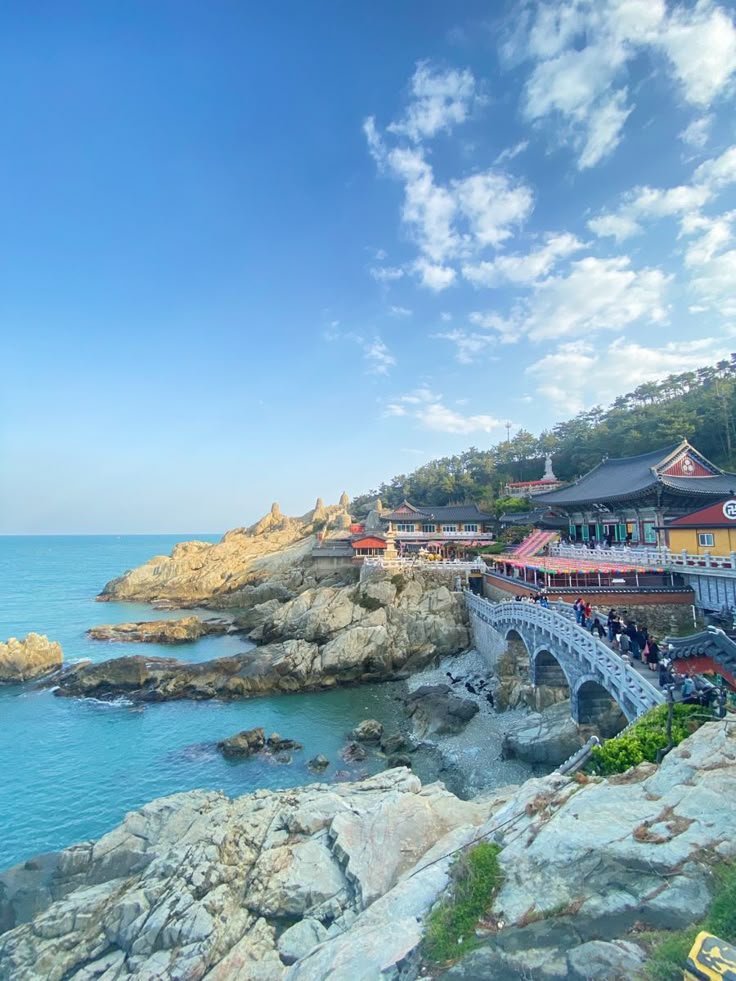
Must-Do Activities
Experience the Changing of the Guard Ceremony
At Gyeongbokgung Palace, the changing of the guard ceremony is a colorful and traditional event that takes place several times a day. Participants wear vibrant Joseon-era costumes and perform ritualistic movements that have been preserved for centuries. Watching this ceremony offers a unique glimpse into Korea’s royal history and pageantry.
Hike Bukhansan National Park
Just north of Seoul, Bukhansan National Park is a favorite spot for hiking enthusiasts. The park features rugged granite peaks, forested trails, and ancient fortress walls. It’s accessible by public transport and offers routes ranging from easy walks to challenging climbs. The panoramic views from the peaks reward hikers with stunning vistas of Seoul and the surrounding mountains.
Stay in a Traditional Hanok
For an immersive cultural experience, spend a night in a hanok guesthouse. These traditional Korean houses feature wooden beams, paper windows, and ondol (underfloor heating). Staying in a hanok, especially in areas like Bukchon or Jeonju, allows you to experience Korean hospitality and architecture in a deeply personal way.
Explore Korean Street Food Markets
Sampling street food is essential to understanding South Korea’s culinary culture. Markets like Gwangjang Market in Seoul offer a wide array of treats such as tteokbokki (spicy rice cakes), hotteok (sweet pancakes), and mandu (dumplings). These lively markets are perfect for tasting authentic flavors and mingling with locals.
Visit the Secret Garden at Changdeokgung
Join a guided tour of the Secret Garden, a beautifully preserved royal garden that offers a peaceful retreat from the city. The garden’s ponds, pavilions, and walking paths are especially enchanting in spring and autumn, when flowers bloom or leaves change color.
Take a Cable Car to N Seoul Tower
The cable car ride up Namsan Mountain is an experience in itself, offering scenic views of Seoul’s skyline and surrounding nature. Once at the tower, enjoy the observation decks, cafes, and the famous “Locks of Love” fence where couples leave padlocks as symbols of their affection.
Explore Jeju’s Natural Wonders
On Jeju Island, hiking Hallasan Mountain, visiting waterfalls, and exploring lava tubes are unforgettable activities. The island’s outdoor adventures are complemented by opportunities to relax on beaches or sample fresh seafood at local restaurants.
Attend a Korean Cultural Performance
Many venues in Seoul and other cities offer traditional music, dance, and theater performances. These shows provide insight into Korea’s artistic heritage and are a wonderful way to spend an evening.
Shop in Myeongdong
Myeongdong is a bustling shopping district where you can find the latest in Korean beauty products, fashion, and souvenirs. The area comes alive at night with street food vendors and neon lights, making it a vibrant spot for both shopping and dining.
Relax at a Korean Spa (Jjimjilbang)
Experience Korean wellness culture by visiting a jjimjilbang, a traditional public bathhouse with saunas, hot tubs, and relaxation areas. These spas offer a unique way to unwind and experience local customs.

Travel Tips
Traveling to South Korea in 2025 promises an exciting blend of rich culture, modern cities, and stunning landscapes. To make your trip smooth, enjoyable, and safe, it’s essential to be well-prepared with practical travel tips, an understanding of local customs, and some basic language knowledge. Here’s a comprehensive guide to help you navigate South Korea confidently and respectfully.
Safety Advice
South Korea is widely regarded as one of the safest countries in the world for travelers. Crime rates are low, with violent crimes such as shootings, terrorism, and robberies being extremely rare. Petty crimes like pickpocketing can occur, especially in crowded areas such as markets, tourist spots, and public transportation, so remain vigilant with your belongings.
Emergency Contacts
- For police assistance, dial 112. Translation services are available for non-Korean speakers.
- For fire or medical emergencies, dial 119. Hospitals and clinics are well-equipped, and many major ones in Seoul offer English-speaking staff.
- For tourist information, dial 1330 (not an emergency number but helpful for travel inquiries).
Avoid Demonstrations and Large Gatherings
Political demonstrations and large-scale protests occasionally occur and can disrupt transportation and public services. While most are peaceful, some can turn volatile unexpectedly. It is advisable to avoid these gatherings altogether and monitor local news or official advisories during your stay.
Health Precautions
South Korea experiences four distinct seasons, with hot, humid summers and cold winters. The monsoon and typhoon season runs roughly from July to November, bringing heavy rains and potential flooding. Always heed local weather warnings and avoid flood-prone areas during heavy rains.
Vaccinations such as Japanese encephalitis and typhoid are recommended for travelers planning extended stays or visits to rural areas. Routine vaccinations like MMR, polio, and flu shots should also be up to date.
Safety for Solo Travelers, Especially Women
South Korea is generally safe for solo travelers, including women. Harassment and catcalling are less common than in many other countries. However, exercise usual caution, especially at night or in nightlife districts like Itaewon and Hongdae, where occasional incidents of harassment have been reported. Avoid walking alone late at night and stay in well-lit, populated areas.
Legal and Security Notes
South Korea takes security seriously, especially concerning military zones. It is illegal to photograph military installations, personnel, or government buildings. Visitors to the Demilitarized Zone (DMZ) are often reminded to delete unauthorized photos.
Carrying pepper spray or knives for self-defense is illegal. Respect local laws to avoid fines or detention.
Transportation Safety
South Korea’s public transport is efficient and safe. However, eating or drinking on buses and subways is generally frowned upon and sometimes prohibited. Priority seats marked in pink are reserved for pregnant women, elderly, and disabled passengers — always offer your seat if you occupy one of these7.
If you plan to drive, note that South Koreans drive on the right side, with strict blood alcohol limits (0.03% BAC), and speed limits vary between 60-100 km/h depending on the road.
Local Customs
Understanding and respecting South Korean customs will enrich your experience and help you avoid unintentional faux pas.
Shoes Off Indoors
It is customary to remove your shoes before entering homes, traditional accommodations (hanok), some guesthouses, and even some restaurants. You may be provided with indoor slippers. This practice reflects respect for cleanliness and tradition7.
No Tipping Culture
Unlike many Western countries, tipping is not customary in South Korea. Restaurants, taxis, and service providers do not expect tips, and bills are generally paid as printed. Trying to tip may cause confusion or polite refusal7.
Politeness and Respect
Koreans value politeness and hierarchy. Bowing is a common greeting, and using both hands when giving or receiving items shows respect. When addressing others, especially elders or those in authority, use formal language and titles.
Avoid loud or boisterous behavior in public places. South Koreans appreciate quiet and orderly conduct, especially on public transport.
Dining Etiquette
- Wait for the eldest person to start eating before you begin.
- Do not stick chopsticks upright into a bowl of rice, as this resembles a funeral ritual.
- When sharing dishes, use the communal utensils provided rather than your personal chopsticks.
- It is polite to pour drinks for others, especially elders, and to receive drinks with both hands.
Respect for Personal Space and Privacy
South Korea is a densely populated country, but people generally respect personal space. Avoid loud phone conversations on public transport and keep your voice low in public areas.
Be cautious about privacy, especially regarding photography. Avoid taking photos of strangers without permission, and never photograph military or government-related sites.
Gift Giving and Souvenirs
If invited to a Korean home, bringing a small gift such as fruit, sweets, or local specialties is appreciated. Gifts are usually opened later, not in front of the giver.
Language Basics
While English is taught in schools and widely used in tourist areas, outside major cities English proficiency can be limited. Learning a few basic Korean phrases will go a long way in showing respect and easing communication.
Essential Phrases
- Hello: 안녕하세요 (Annyeonghaseyo)
- Thank you: 감사합니다 (Gamsahamnida)
- Yes: 네 (Ne)
- No: 아니요 (Aniyo)
- Excuse me / Sorry: 죄송합니다 (Joesonghamnida)
- It’s okay / No problem: 괜찮아요 (Gwaenchanayo)
- Please: 제발 (Jebal)
- Help!: 도와주세요! (Dowajuseyo!)
Using Numbers and Directions
Basic numbers and directional words are useful for shopping, transportation, and asking for help. For example, knowing how to say “one” (하나, hana), “two” (둘, dul), or “left” (왼쪽, oenjjok) and “right” (오른쪽, oreunjjok) can be very helpful.
Apps and Translation Tools
Apps like Naver Dictionary, KakaoTalk, and Papago Translator are popular and reliable for real-time translation and navigation assistance. Many signs, menus, and public transport information are also available in English in major cities.
Final Thoughts
Final Tips for a Smooth Trip
- Always carry a copy of your passport and important documents separately from the originals.
- Register with your embassy or consulate if possible, for emergency updates.
- Respect local customs and dress modestly, especially when visiting religious or traditional sites.
- Use public Wi-Fi cautiously; consider a local SIM card or portable Wi-Fi device for secure internet access.
- Try to learn a bit about Korean culture and etiquette before you go—it will enrich your interactions and experiences.
In conclusion, South Korea in 2025 is a safe, welcoming, and fascinating destination. By following these safety tips, embracing local customs, and learning some basic Korean, you’ll enjoy a respectful and enriching travel experience. Whether exploring bustling Seoul, tranquil temples, or scenic countryside, being prepared will help you make the most of your adventure in this vibrant country.

